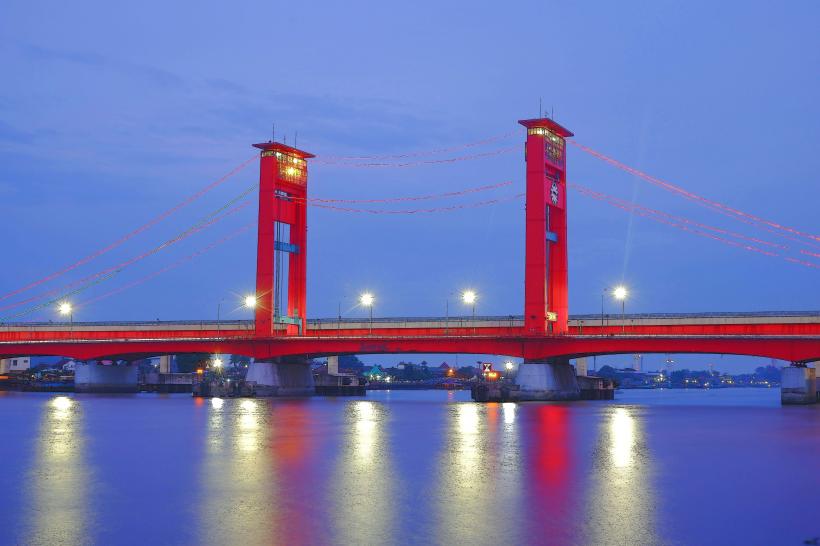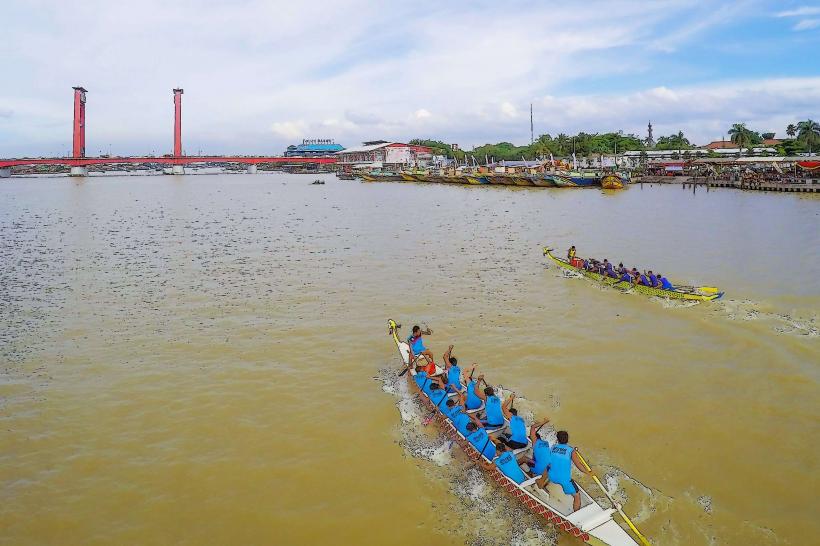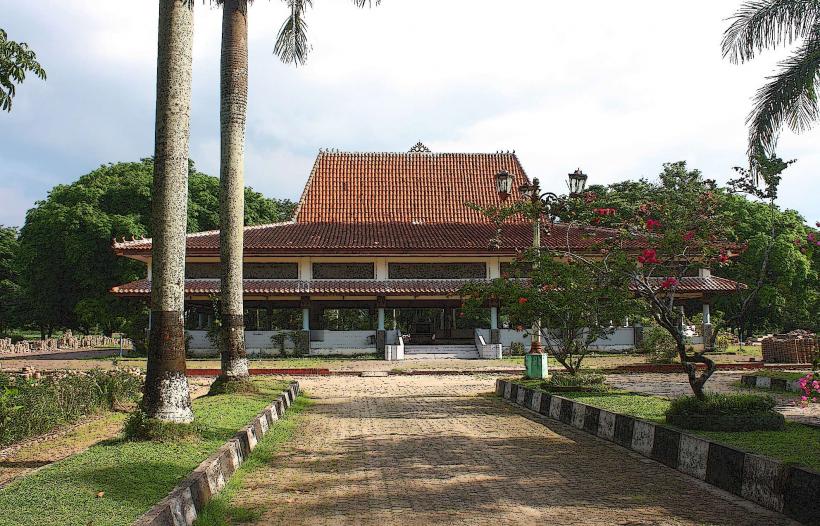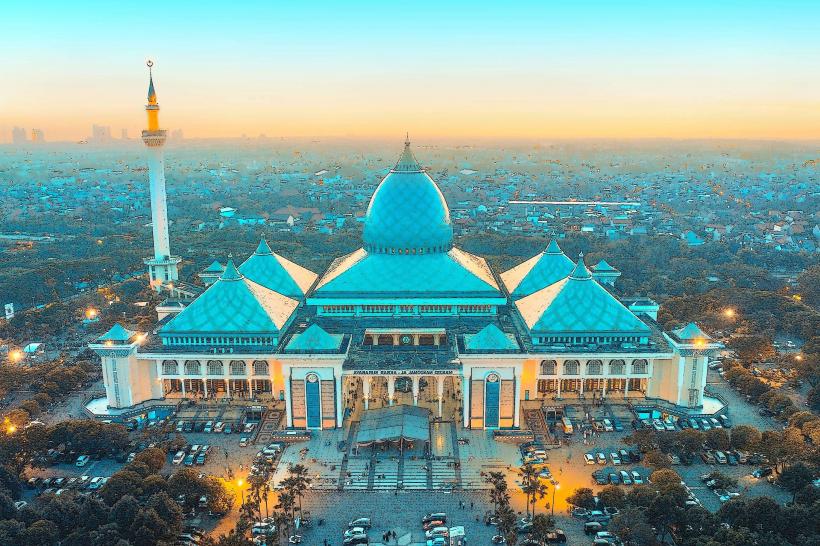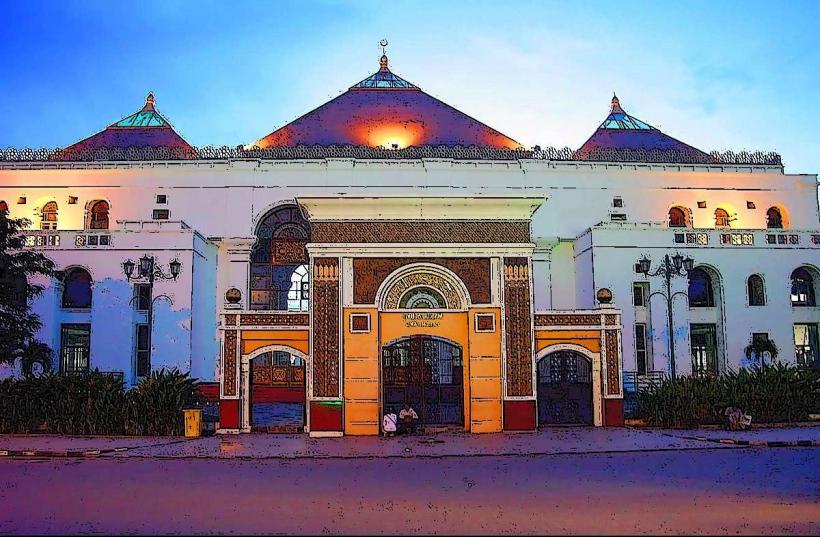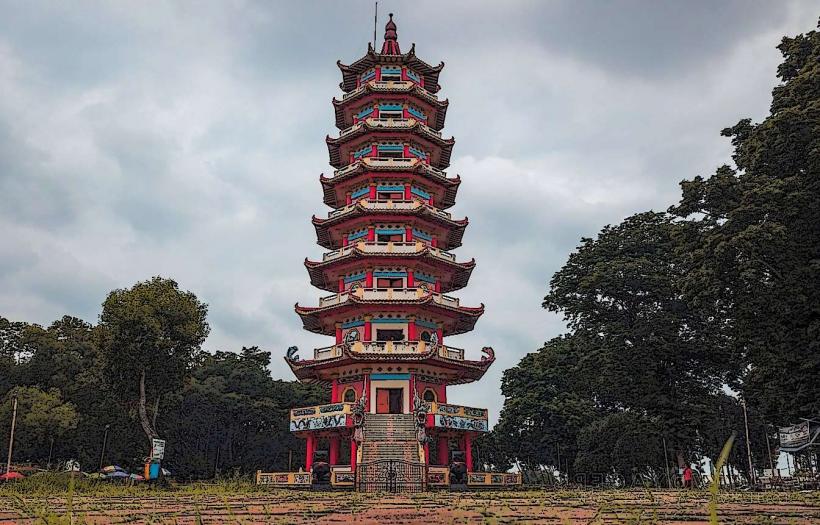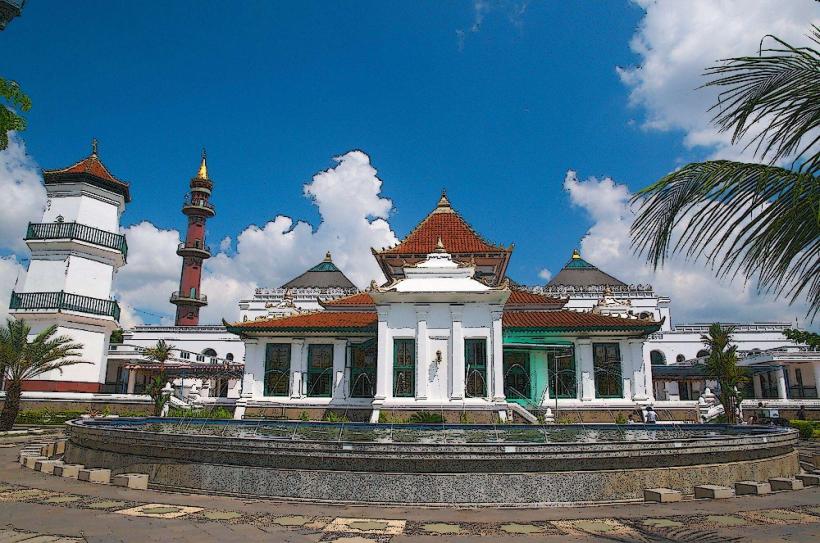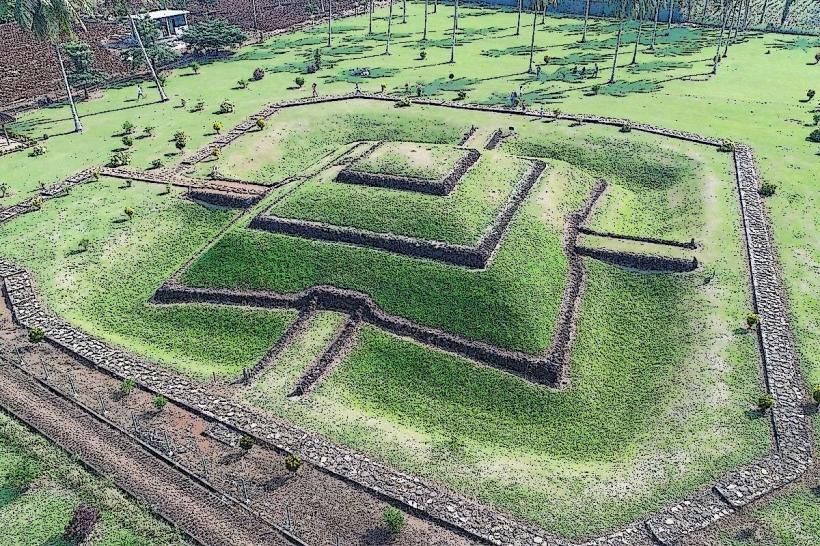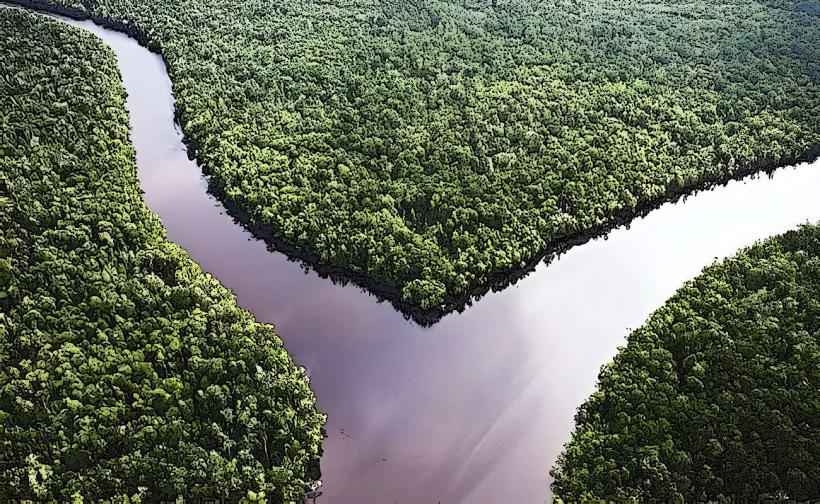Information
Landmark: Sultan Mahmud Badaruddin II MuseumCity: Palembang
Country: Indonesia
Continent: Asia
The Sultan Mahmud Badaruddin II Museum is a historic and cultural landmark in Palembang, South Sumatra, Indonesia, dedicated to preserving the city’s rich heritage. Located near the iconic Ampera Bridge and overlooking the Musi River, the museum offers insights into the history, culture, and traditions of Palembang, from the era of the Sriwijaya Kingdom to the colonial and modern periods.
Key Highlights of the Sultan Mahmud Badaruddin II Museum
1. Overview
- Name: The museum is named after Sultan Mahmud Badaruddin II, a heroic figure who led Palembang's resistance against Dutch colonial rule in the early 19th century.
- Location: Situated in Kuto Besak Square, near other prominent landmarks like the Ampera Bridge and Kuto Besak Fort.
- Building: The museum is housed in a former colonial-era palace, built in the traditional style with elements of European architecture.
2. Historical Significance
- Palembang Sultanate:
- The museum commemorates the legacy of Sultan Mahmud Badaruddin II, who played a significant role in Palembang’s fight for independence against Dutch colonization.
- Building History:
- The building was originally a residence for Dutch officials after the fall of the Palembang Sultanate.
- It was later converted into a museum in 1984, showcasing artifacts from various periods of Palembang's history.
3. Architecture
- Fusion of Styles:
- The museum building reflects a combination of traditional Palembang architecture and European colonial influences, making it an architectural gem.
- Structure:
- It is a two-story structure with wooden flooring, a wide veranda, and intricate carvings, reminiscent of a traditional Malay house.
4. Exhibits and Collections
The museum’s collections cover various aspects of Palembang’s history, culture, and heritage. Some key sections include:
a. Sriwijaya Kingdom Artifacts
- The museum highlights Palembang’s golden era as the capital of the Sriwijaya Kingdom (7th–13th centuries), a powerful maritime empire.
- Artifacts:
- Ancient inscriptions, including the Kedukan Bukit Inscription, which details the kingdom’s establishment.
- Stone relics, statues of Buddha, and tools used during the Sriwijaya period.
b. Sultanate Era
- The Sultanate of Palembang (16th–19th centuries) is extensively documented through:
- Royal regalia: Crowns, swords, and ceremonial attire of the sultans.
- Weapons: Traditional weapons like kris (daggers) and cannons used during battles.
- Documents: Letters and treaties from the Sultanate period.
c. Colonial Era
- Exhibits from the Dutch colonial period include:
- Colonial-era furniture, maps, and documents.
- Artifacts illustrating the impact of colonialism on Palembang.
d. Cultural Artifacts
- The museum displays items showcasing Palembang’s rich cultural traditions, including:
- Traditional clothing like songket (handwoven fabric with gold or silver threads).
- Musical instruments like gongs and rebab (string instruments).
- Household items, jewelry, and pottery used by Palembang’s people over centuries.
e. Musi River History
- The Musi River’s role as a lifeline for Palembang is explored through models of traditional boats, tools for fishing, and trade artifacts.
5. Cultural Importance
- Preserving Heritage:
- The museum serves as a repository for preserving and promoting Palembang’s cultural and historical heritage.
- Educational Role:
- It provides a valuable resource for students, researchers, and tourists to learn about the city’s history and traditions.
6. Visitor Experience
- Guided Tours:
- Visitors can join guided tours to learn about the exhibits in detail. Knowledgeable guides provide insights into the artifacts and their historical significance.
- Interactive Displays:
- Some sections feature interactive displays, allowing visitors to engage with the exhibits.
- Photography:
- Photography is allowed in certain areas, but visitors are encouraged to respect the museum’s rules.
7. Practical Information
- Location: Kuto Besak Square, Palembang, South Sumatra, Indonesia.
- Opening Hours:
- Typically open Tuesday to Sunday, from 8:00 AM to 4:00 PM.
- Closed on Mondays and public holidays.
- Entry Fee:
- There is a small admission fee, which helps with the maintenance of the museum.
- Accessibility:
- The museum is easily accessible by car, motorbike, or public transportation from various parts of Palembang.
8. Nearby Attractions
- Ampera Bridge: A few steps away, offering beautiful views of the Musi River.
- Musi River: Visitors can enjoy boat rides and explore floating markets.
- Kuto Besak Fort: A historical fort near the museum, providing further insights into Palembang’s past.
9. Best Time to Visit
- Morning or Early Afternoon: To avoid crowds and enjoy the exhibits at a relaxed pace.
- Dry Season: Palembang’s dry season (May to September) is ideal for visiting the museum and exploring nearby outdoor attractions.
10. Conclusion
The Sultan Mahmud Badaruddin II Museum is a treasure trove of history and culture, offering visitors a chance to delve into the rich heritage of Palembang. From its origins as a palace to its current role as a museum, it stands as a testament to the city’s resilience, diversity, and legacy. Whether you are a history enthusiast or a casual traveler, the museum promises an enriching and memorable experience.

